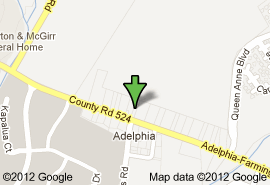Your walk-in cooler’s efficiency directly impacts your food service business’s bottom line through energy costs, product preservation, and system longevity. To maximize performance, you’ll need to focus on key areas including smart monitoring systems, proper insulation, airflow management, and strategic equipment layout. Regular maintenance combined with structural improvements like sealed gaskets, strip curtains, and LED lighting upgrades will help you achieve peak operational efficiency while reducing energy consumption.

Energy-Saving Enhancements & Smart Features
You’ll maximize your walk-in cooler’s efficiency by incorporating smart features like Bluezone units that actively reduce food spoilage and extend shelf life.
Installing a window in your cooler door lets staff check inventory without opening it, maintaining stable temperatures and reducing energy loss.
Real-time monitoring systems provide instant alerts about temperature fluctuations, door status, and lighting conditions, helping you prevent product waste and control energy costs.
Modern walk-in coolers can benefit greatly from energy-saving features like Bluezone units that reduce spoilage. Adding a window to the cooler door helps maintain temperatures by minimizing unnecessary openings. Real-time monitoring systems that alert staff to temperature changes, door status, and lighting conditions help preserve food quality and reduce energy waste
Modern walk-in coolers now come equipped with cutting-edge features that drastically reduce energy consumption and food waste.
You’ll love how bluezone food preservation technology zaps those pesky microbes while real-time temperature monitoring keeps your goods fresh like a watchful kitchen ninja.
Don’t forget about those handy door windows – no more playing “what’s behind door number one” and letting precious cold air escape through faulty walk-in cooler door seals.
Structural & Component Considerations
To maximize your walk-in cooler’s efficiency, you’ll need sturdy, insulated flooring that can handle heavy loads while preventing cold air from escaping through the bottom. Your cooler’s door heaters are essential for preventing freeze-ups and ensuring smooth operation during frequent opening and closing. Well-maintained gaskets and properly installed tongue-and-groove panels create an airtight seal that keeps cold air in and warm air out, markedly diminishing energy waste.
Durable, insulated flooring supports heavy loads and prevents cold loss, improving both safety and longevity. Installing door heaters helps prevent freezing and sticking. High-quality gaskets and tongue-and-groove panel systems are essential for sealing the cooler and maintaining thermal integrity with minimal energy loss
Structural integrity in walk-in coolers starts from the ground up with proper flooring solutions. Your durable flooring isn’t just a fancy dance floor for your produce – it’s a heavyweight champ that keeps the cold where it belongs.
Don’t forget those door heaters, unless you enjoy wrestling with frozen handles! And remember, high-quality gaskets and tongue-and-groove panels maintain thermal integrity like a clingy winter coat.
Layout, Insulation & Airflow Management
Your walk-in cooler’s layout directly impacts its performance, so you’ll want to position doors away from high-traffic zones and install strip curtains to minimize warm air infiltration.
You can maximize airflow by using wire shelving and maintaining proper spacing between stored items, ensuring cold air circulates efficiently throughout the space.
To maintain consistent temperatures and reduce energy costs, you’ll need to focus on high-R value insulation and promptly seal any cracks or gaps in the cooler’s structure.
Walk-in coolers should have doors placed in low-traffic areas and use strip curtains to reduce air infiltration. Interior organization should support airflow, using wire shelving and avoiding overloading. High-R insulation and sealing cracks or gaps are critical for temperature stability and energy efficiency
Smart placement of walk-in cooler doors greatly affects both energy efficiency and operational flow. You’ll want those doors tucked away from high-traffic zones – nobody likes playing dodgeball with rushing servers!
Maximize walk-in cooler airflow with wire shelving, and don’t stuff your cooler like it’s a college student’s mini-fridge.
Check your cooler insulation r-value and perform regular gasket inspection cooler maintenance to keep the cold where it belongs.
Lighting & Equipment Operation
You’ll see immediate benefits by upgrading to LED lighting in your walk-in cooler, as these efficient bulbs generate less heat and consume less power than traditional options.
Your equipment maintenance routine should include regular cleaning of condenser coils, monitoring refrigerant levels, and keeping fan motors properly lubricated.
Taking these preventive steps not only reduces your energy costs but also helps you avoid costly breakdowns and extends your system’s lifespan.
LED lighting is a smart upgrade, reducing internal heat gain and lowering energy costs. Regular equipment maintenance—cleaning coils, checking refrigerants, lubricating fans, and replacing worn parts—ensures the system operates efficiently and avoids unexpected downtime
In today’s competitive food service industry, upgrading to LED lighting in walk-in coolers delivers immediate cost savings and operational benefits. You’ll slash energy costs while your old fluorescent lights wave goodbye.
Plus, LED lighting walk-in cooler systems run cooler, reducing strain on your compressor. Don’t forget regular compressor maintenance – it’s like giving your energy-saving refrigeration system a spa day that keeps it running smoothly.
Maintenance & Operational Best Practices
Regular inspections of your walk-in cooler’s gaskets, temperature readings, and coil cleanliness will prevent costly breakdowns and maintain peak efficiency.
You’ll see immediate energy savings by upgrading worn components like door seals and hinges that compromise your system’s performance.
Your operational costs can drop further when you implement advanced strategies such as load-shifting during off-peak hours and optimizing compressor sequences.
Create a routine inspection plan to check gaskets, monitor temperatures, and clean coils. Refurbishing aging systems, such as replacing worn doors, can deliver instant efficiency gains. Advanced strategies like load-shifting and compressor sequencing can further reduce energy use and operational costs.
Maintaining peak efficiency in walk-in coolers depends on a structured inspection routine. You’ll want to embrace smart refrigeration controls while keeping tabs on those pesky gaskets – they’re like the weather strippers of the commercial refrigeration world!
Load-shifting strategies can help you dodge peak energy rates, and don’t forget to give those coils a regular spa day. Your wallet (and your food) will thank you.





